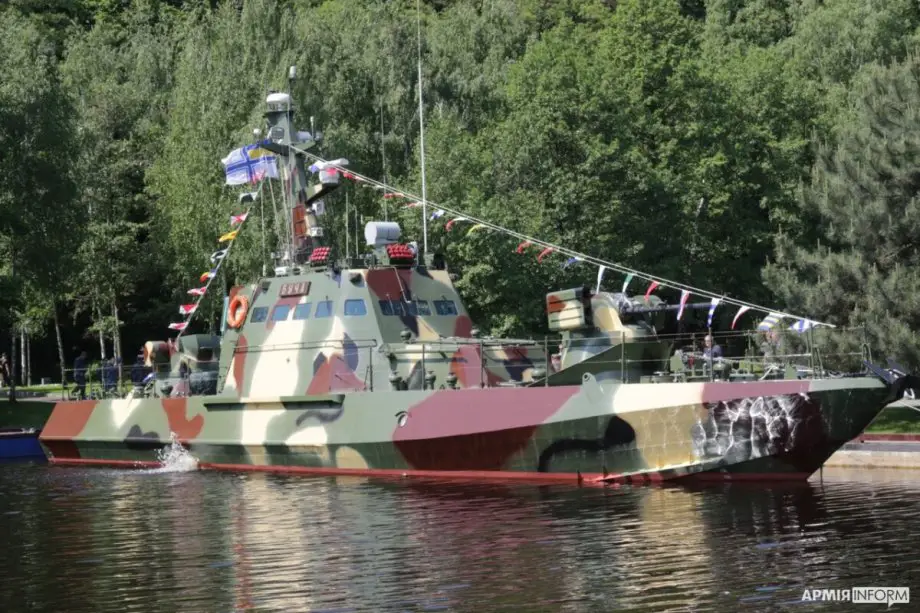According to information published by Zvezda on March 22, 2024, the Russian Federation officially announced the reformation of the Dnieper Flotilla. Defense Minister Sergei Shoigu revealed this during a session of the Defense Ministry.
Follow Navy Recognition on Google News at this link
 Ukrainian Gyurza-M-class gunboat Bucha. (Picture source: ArmyInform)
Ukrainian Gyurza-M-class gunboat Bucha. (Picture source: ArmyInform)
A brief historical excursion seems appropriate here. The idea of creating a specialized military flotilla for operations on Ukraine's most important river communication is not new. For instance, Russian sailors had to establish such a flotilla at least five times.
The history of the first Dnieper Flotilla began on January 4, 1737, with the Senate's decree to build small ships at the Bryansk Admiralty on the Desna River.
The Dnieper Flotilla was formed for the second time in 1788, with the renowned American privateer John Paul Jones and French aristocrat Charles Henry Nicolas Otto de Nassau-Siegen as its commanders. The third Dnieper Flotilla was created in March 1919 during the Civil War.
The fourth military flotilla on the Dnieper was established in June 1931. In June 1940, the river unit was disbanded, and the ships and vessels of the former Dnieper Flotilla were transferred to the Danube and Pinsk military flotillas, where they were lost at the beginning of the Great Patriotic War. Accordingly, when the Red Army reached the Dnieper River in the autumn of 1943, the Dnieper military flotilla had to be recreated for the fifth time.
The new river unit was formed in September 1943 from ships of the Volga military flotilla. By the spring of 1944, the new Dnieper Flotilla had become a whole armada of about 140 boats and ships, including 16 armored boats, 10 patrol boats, 40 river minesweepers, a floating artillery battery, and 32 semi-gliders.
The latter reached the capital of Nazi Germany during the Red Army's offensive operations, allowing the Dnieper military flotilla to become the only naval unit to participate in the Berlin operation.
After the end of the Great Patriotic War, the Dnieper Flotilla was transferred under the operational control of the commander of the Group of Soviet Occupation Forces in Germany, after which the flotilla was soon disbanded.
But only to create, on its basis, a training unit of the USSR Navy in the Belarusian city of Pinsk. This training unit, after the dissolution of the USSR, became the basis for creating a river division of border patrol boats of the Republic of Belarus.
In the early 2000s, the division included 4 KS-100 type boats, 3 - project 376, 4 - project 1390 "Strizh" and 5 - project 1800 "Gepard" (on air cushion). Overall, it was a fairly numerous unit. Meanwhile, independent Ukraine had only small police/patrol boats on the Dnieper.
In March 2022, the Ukrainian military-political leadership decided to create the first division of river boats on the Dnieper and its tributaries, primarily aimed at actions against the Belarusian army, if it launched military operations against the Armed Forces of Ukraine and crossed the state border.



